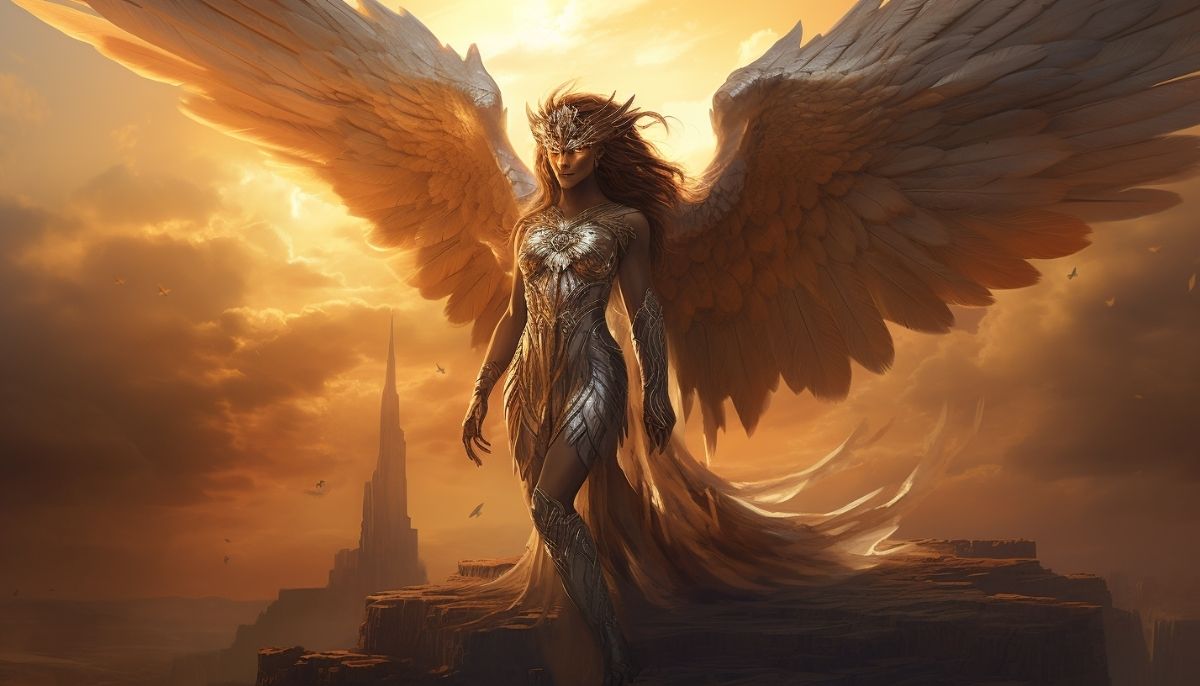The Sphinx is a captivating enigma of Greek lore. Shrouded in mystery and symbolism, this mythical being weaves through ancient tales, leaving an indelible mark on imagination.
In this journey, we unravel the Sphinx’s story—her origins, fateful encounters, and echoes in other myths. From birth to demise, we peel back the layers of this mesmerizing narrative.
Join us as we navigate the world of the Sphinx, where riddles and legends intertwine, offering insights into the profound depths of ancient Greek storytelling.
What did the Sphinx of Greek mythology look like?
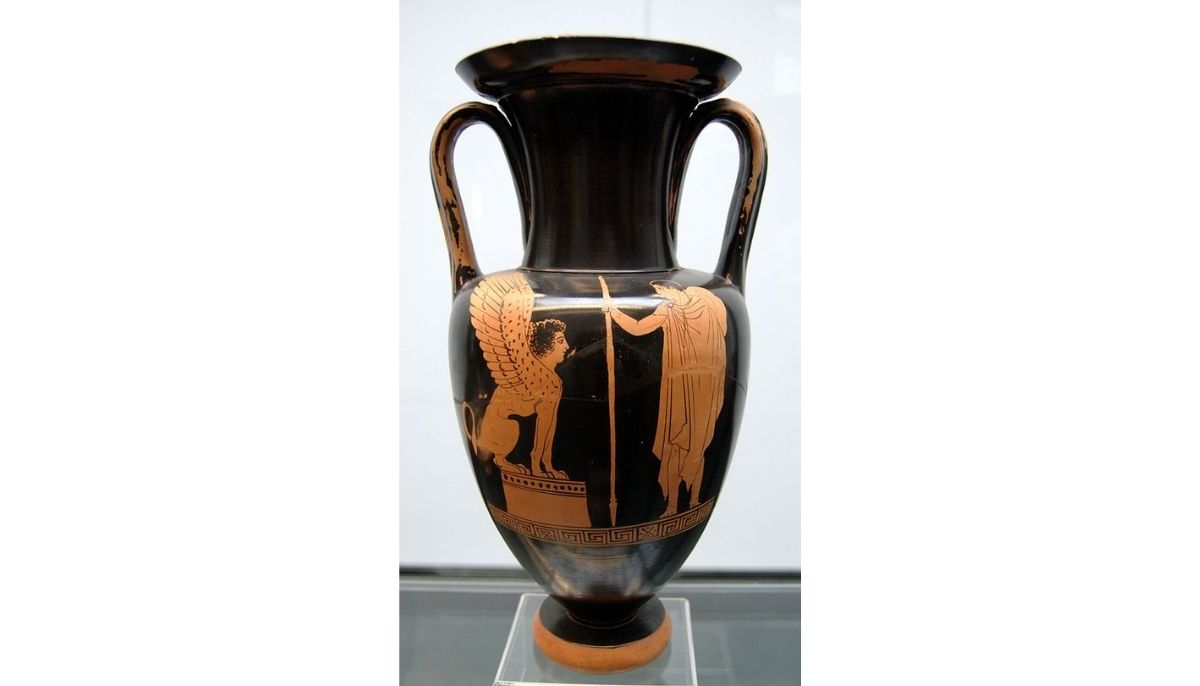
The Sphinx of Greek mythology is described as a female monster with a distinctive combination of features. She possesses a lion’s body, topped with a woman’s head and breasts.
Additionally, she is depicted with an eagle’s wings and, according to some accounts, a serpent’s tail. This unique fusion of animal and human elements adds to the enigmatic nature of the Sphinx.
The Sphinx’s appearance, with its striking blend of characteristics, is a testament to the creative and imaginative nature of ancient mythology.
Origins of the Greek Sphinx
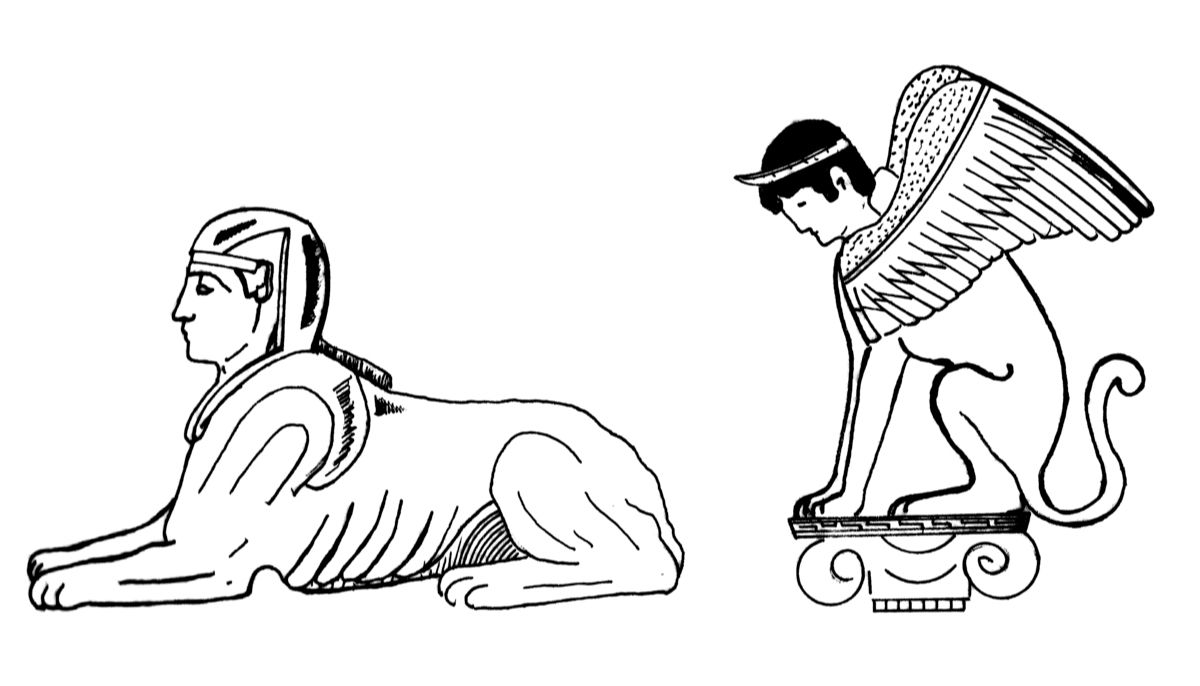
The myth of the Sphinx has roots in both Greek and Egyptian cultures, but its precise origin remains shrouded in mystery.
In Greek mythology, the Sphinx is commonly associated with Thebes. The Sphinx’s arrival in Thebes is often linked to divine punishment, with various accounts attributing her presence to gods like Hera, Ares, or Dionysus.
Some versions even suggest she was one of the women driven mad alongside the daughters of Cadmus, transformed into this monstrous figure. Additionally, it’s proposed that Laius, king of Thebes, taught the Sphinx the riddles he received from the oracle at Delphi.
However, the figure of the Sphinx predates Greek mythology. In Egypt, Sphinx-like creatures with the bodies of lions and human heads were a common motif, symbolizing protection and guardianship. For instance, the Great Sphinx of Giza is one of the most renowned examples, carved directly from the limestone bedrock.
Egyptian roots of the Greek Myth
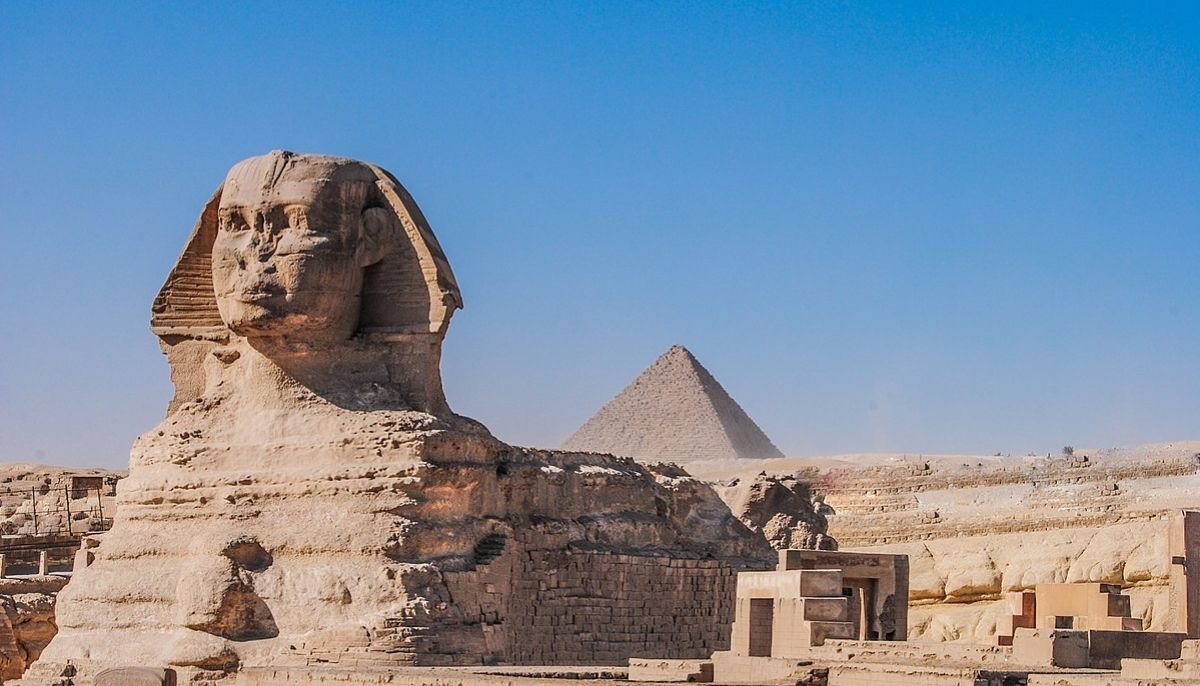
While both Greek and Egyptian cultures feature Sphinx-like creatures, there are distinct differences in their interpretations. In Egypt, the Sphinx was typically represented as a recumbent lion with a human head, often adorned with a pharaoh’s headdress. It was commonly associated with royalty and protection, as a guardian figure for tombs and temples.
Rather than being a benevolent guardian, the Greek Sphinx poses riddles to travelers, and her presence in Thebes is marked by turmoil and suffering.
Notably, both cultures share a reverence for the Sphinx’s role in testing wit and knowledge. In Egypt, the creature’s presence at tombs emphasized the idea of passage into the afterlife, akin to a trial. Similarly, in Greece, the Sphinx’s riddles were a means of judgment and a test of intelligence for those who encountered her.
Overall, the similarities lie in the symbolic weight of the Sphinx figure: it serves as a liminal guardian, bridging the realms of the living and the dead and challenging mortals to prove their wisdom.
However, the distinct interpretations in Greek and Egyptian mythology highlight the cultural nuances and interpretations that shaped the legend of the Sphinx in each civilization.
Story of the Sphinx and Thebes
Thebes, a prominent city in Greek mythology, fell under the shadow of a malevolent Sphinx. Perching herself atop Mount Phikion, she posed a riddle to all who approached, demanding an answer under threat of death.
She posed the riddle: “What is it that has one voice, and is four-footed and two-footed and three-footed?” The answer to this enigma was “man.” As an infant, a human crawls on all fours, signifying the four-footed stage. In adulthood, they stand upright on two feet, and in old age, they often rely on a cane, representing the three-footed phase.
For years, the Sphinx’s riddle claimed countless lives, striking fear into the hearts of Thebans. The city was engulfed in a perpetual state of anxiety and mourning. It was only when Oedipus, the wise and resourceful king, arrived in Thebes that the tides began to turn.
The Death of the Sphinx
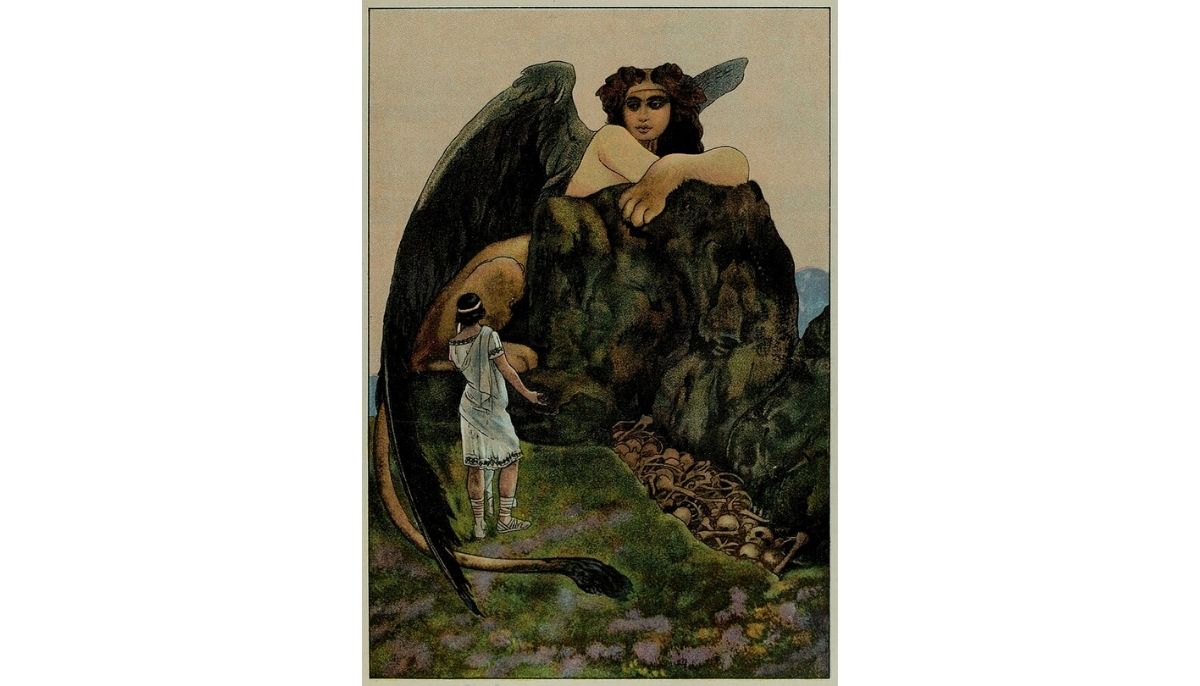
Oedipus, a stranger to Thebes, dared to face the Sphinx and her perplexing riddle. Confident in his intelligence, he boldly declared the answer: “man.” The Sphinx, unable to retain her composure at this revelation, was consumed by rage and despair. In her fury, she flung herself from Mount Phikion’s heights, ending her reign of terror.
With the Sphinx defeated Thebes was freed from her malevolent grasp. In this triumphant moment, Oedipus not only saved the city from its torment but also earned the admiration and gratitude of its citizens.
This monumental victory established Oedipus as a legendary figure in Greek mythology. His intelligence and courage in the face of the Sphinx’s challenge became a symbol of triumph over adversity and a testament to the power of human intellect. The tale of Oedipus and the Sphinx remains one of ancient Greek lore’s most enduring and celebrated narratives.
Similar monsters in Greek mythology
In Greek mythology, the Sphinx was not the only formidable creature to challenge and threaten mortals. Several other monstrous beings held a place in the pantheon of ancient Greek lore, each with its own unique characteristics and challenges. The Chimera, the Nemean Lion, and the Minotaur stand out among them.
The Chimera was a terrifying hybrid creature with the body of a lion, the head of a goat rising from its back, and a serpent for a tail. This monstrous amalgamation struck fear into the hearts of many, but it met its end at the hands of the hero Bellerophon with the help of the winged horse Pegasus.
The Nemean Lion, impervious to mortal weapons, was a massive and indomitable beast. Its golden fur was impervious to harm, rendering it a formidable adversary. As part of his Twelve Labors, Hercules strangled the lion with his bare hands, showcasing his immense strength.
The Minotaur, a creature with the body of a man and the head of a bull, was confined within the labyrinth of Knossos on the island of Crete. It was the offspring of Pasiphae, the queen of Crete, and a bull. Theseus, a hero of Athens, confronted and ultimately defeated the Minotaur, escaping the labyrinth with the help of Ariadne’s thread.
These monstrous creatures, much like the Sphinx, posed formidable challenges to heroes of Greek mythology. Their stories, filled with feats of strength, intelligence, and cunning, serve as enduring examples of the triumph of humanity over adversity.
Want to know more about the creatures and monsters of Greek Mythology?
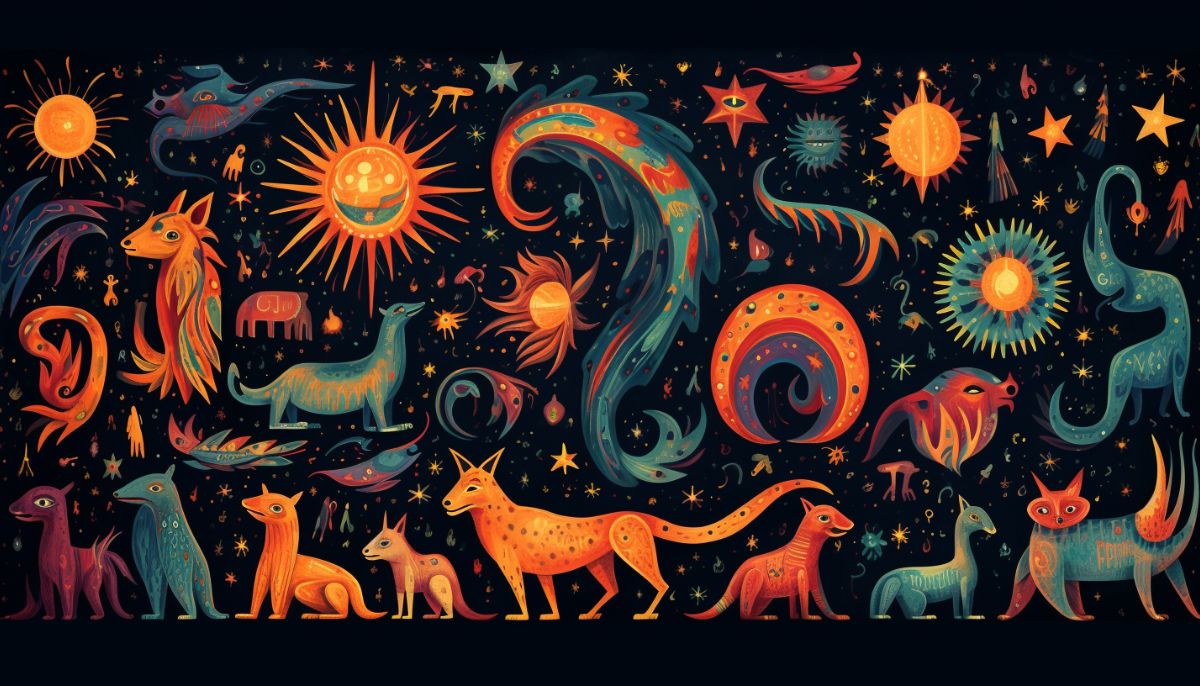
Explore more articles like this in our broader series on Greek monsters. To delve even deeper into the world of mythical creatures, be sure to check out our comprehensive hub article on the monsters of Greek mythology.
